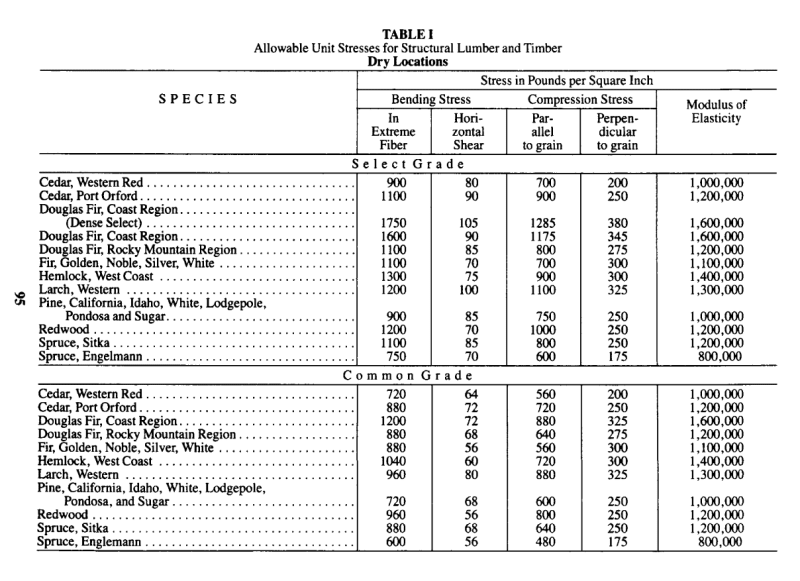mfstructural
Structural
Hey everyone -
I'm interested in getting people's thoughts on the strength of existing wood joists in an existing building built in 1909. My scope was related to evaluating the roof framing for new RTUs and the 2nd and 3rd floors for some new mechanicals, but we came across an issue where I ended up evaluating the existing joists. The building is 32' wide x 155' long. The joists on the 2nd and 3rd floor span from front to back between 15'9" and 17' (span lengths), between steel beams. The building was renovated in 2007 and the drawings from that renovation list the LL as 100 psf and the joists as 1.75"x13". I performed a check on these joists and they were not working for a Fb of 1,000psi. I informed my client and they were not happy. In fact, they found another engineer to run some numbers and see if it works to verify my opinions. A calc I received from a supposedly licensed engineer uses a Fb of 1750psi for Douglas Fir Larch #1, with a repetitive use factor included. I feel like this is somewhat unconservative, but the drawings from 2008 also listed these joists for 100 psf LL capacity. I wanted to get people's thoughts on using 1500 psi for existing wood rough sawn joists. I've included some photos. They are not happy with me and my findings and I've been asked to sharpen my pencil, but I'm not sure how far I want to go. Reinforcing all the joists would be a serious undertaking of costs and time, but I can't let that dictate my decision.


I'm interested in getting people's thoughts on the strength of existing wood joists in an existing building built in 1909. My scope was related to evaluating the roof framing for new RTUs and the 2nd and 3rd floors for some new mechanicals, but we came across an issue where I ended up evaluating the existing joists. The building is 32' wide x 155' long. The joists on the 2nd and 3rd floor span from front to back between 15'9" and 17' (span lengths), between steel beams. The building was renovated in 2007 and the drawings from that renovation list the LL as 100 psf and the joists as 1.75"x13". I performed a check on these joists and they were not working for a Fb of 1,000psi. I informed my client and they were not happy. In fact, they found another engineer to run some numbers and see if it works to verify my opinions. A calc I received from a supposedly licensed engineer uses a Fb of 1750psi for Douglas Fir Larch #1, with a repetitive use factor included. I feel like this is somewhat unconservative, but the drawings from 2008 also listed these joists for 100 psf LL capacity. I wanted to get people's thoughts on using 1500 psi for existing wood rough sawn joists. I've included some photos. They are not happy with me and my findings and I've been asked to sharpen my pencil, but I'm not sure how far I want to go. Reinforcing all the joists would be a serious undertaking of costs and time, but I can't let that dictate my decision.



